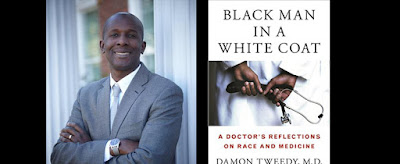by Paul Kalanithi
From Henry Marsh's review in The Guardian:
“Dr. Kalanithi describes, clearly and simply, and entirely
without self-pity, his journey from innocent medical student to professionally
detached and all-powerful neurosurgeon to helpless patient, dying from cancer.
Every doctor should read this book—written by a member of our own tribe, it
helps us understand and overcome the barriers we all erect between ourselves
and our patients as soon as we are out of medical school.”—Henry Marsh, author
of Do No Harm: Stories of Life, Death, and Brain Surgery
This book has enjoyed an amazing success. It was heavily promoted by the publishers.
Random Musings on WBBA (DJE)
WBBA an illness
narrative, and the essential part deals with a 36 year-old neurosurgical
resident with Stage IV lung cancer. It's
a short book, cobbled together from his computer files posthumously by his
wife, Lucy, herself the physician. It's 225 pages long. The first 114 pages comprise background material
of Paul’s early years in Arizona, his education from high school, to Stanford,
to Cambridge for a Masters in Philosophy, to Yale Medical school and then back
to Stanford for a neurosurgical residency.
In the seventh year of his surgical training he was diagnosed with
metastatic lung cancer. This part of the book starts on page 120 and ends on
page 199. The last 25 pages of the book is in afterward by the author's wife.
The meat of the book is therefore 75 pages that trace the terminal illness's of
young doctor facing death. As such. it is valuable. In the late 1940s, John
Gunter wrote Death Be Not Proud, about his son Johnny who died of a similar
brain tumor. It is a classic.
When Breath Becomes Air is the author’s bequeath to his
audience. In that respect, it's similar to Francis W Peabody’s essay "The Care of the Patient”
which was published in 1926 and was the last words of a 46-year-old internist
to the Harvard medical students he mentored.
What's new here is the marketing. The agents for WBBA have
worked successfully to get reviews in major newspapers and periodicals published.
These review have driven sales to create a bestseller. And why not? That’s how
things are done. But it seems kind of
aggressive to me.
WBBA has an introduction but Abraham Verghese, an eminent
physician/ writer at Stanford. In my
opinion, this forward is over-the-top and does not add value to the book. The brilliance of WBBA is the second section
of 79 pages. That is worth parsing.













